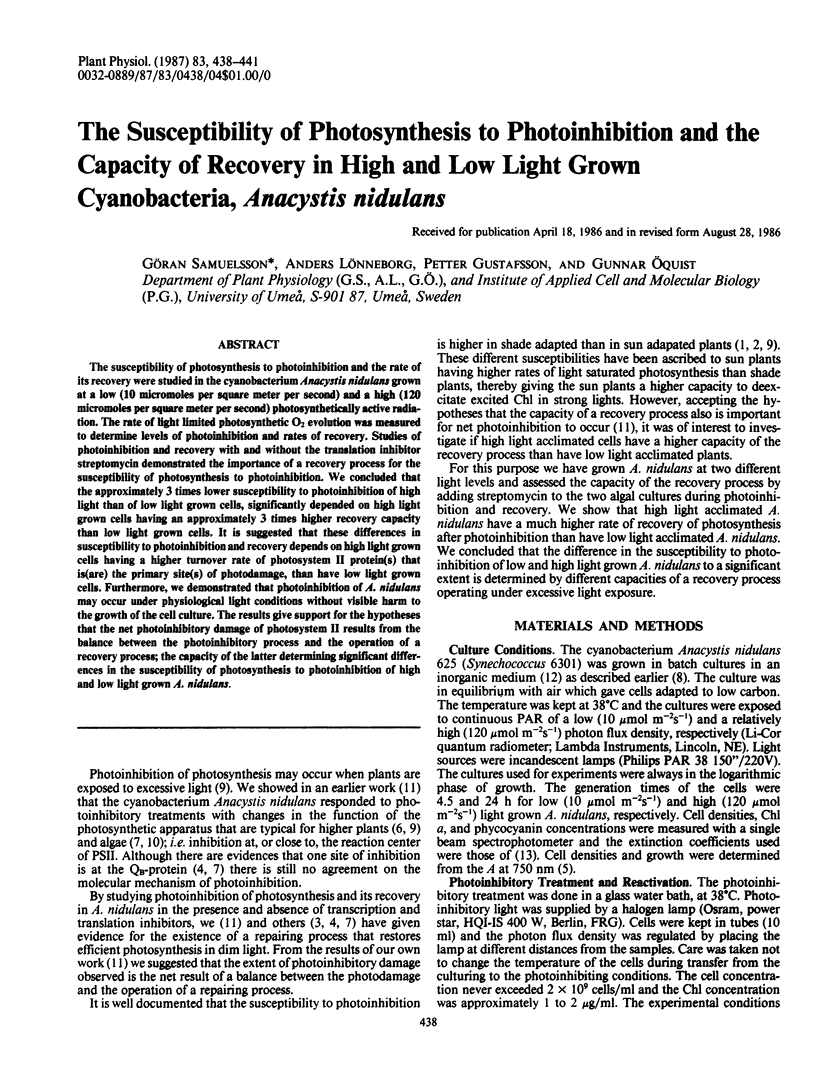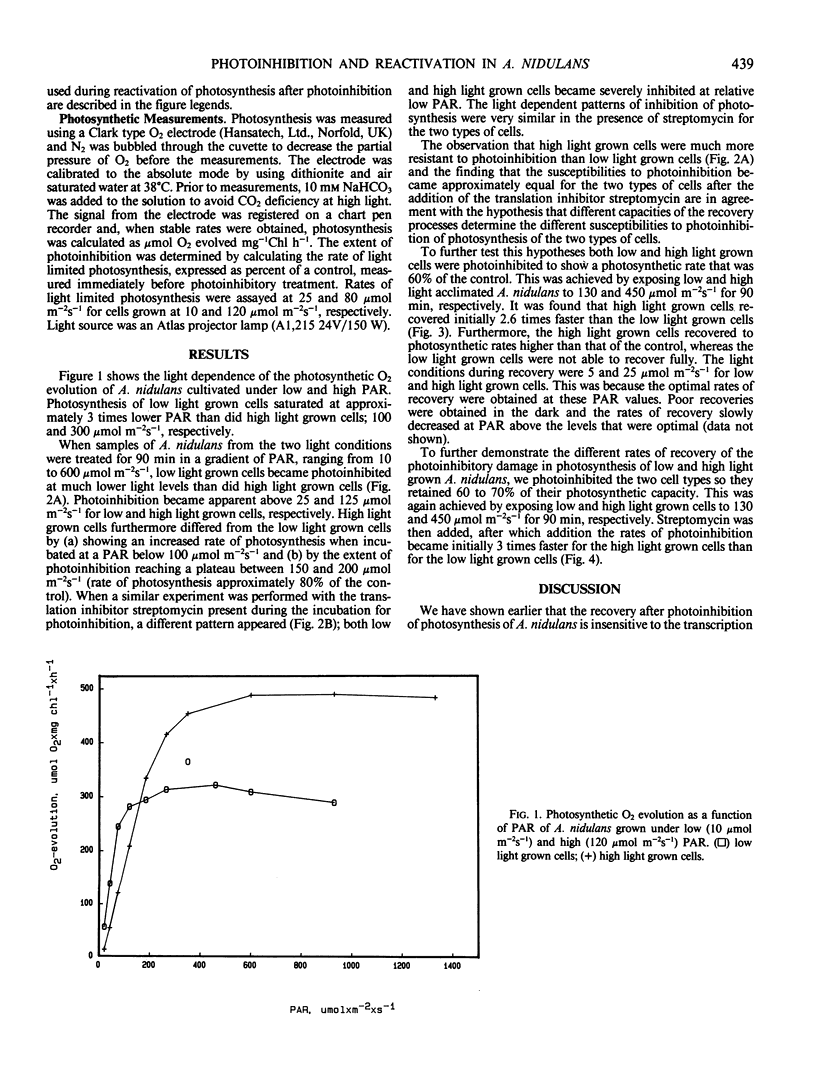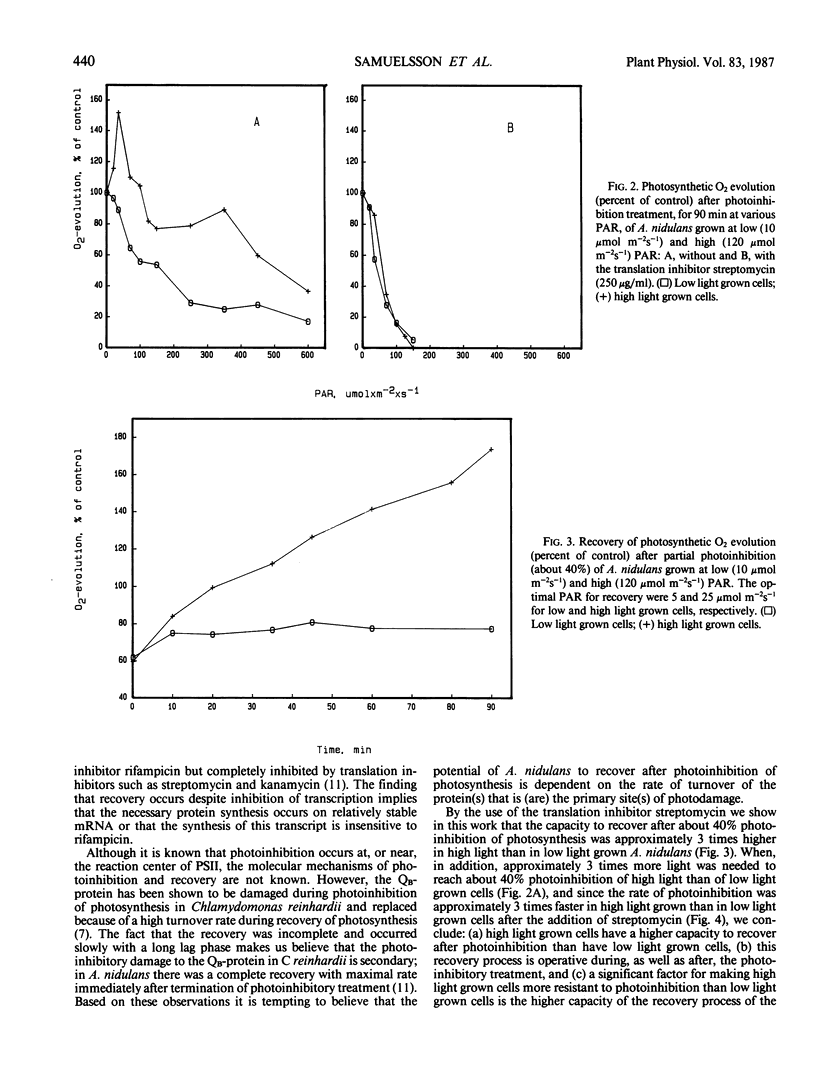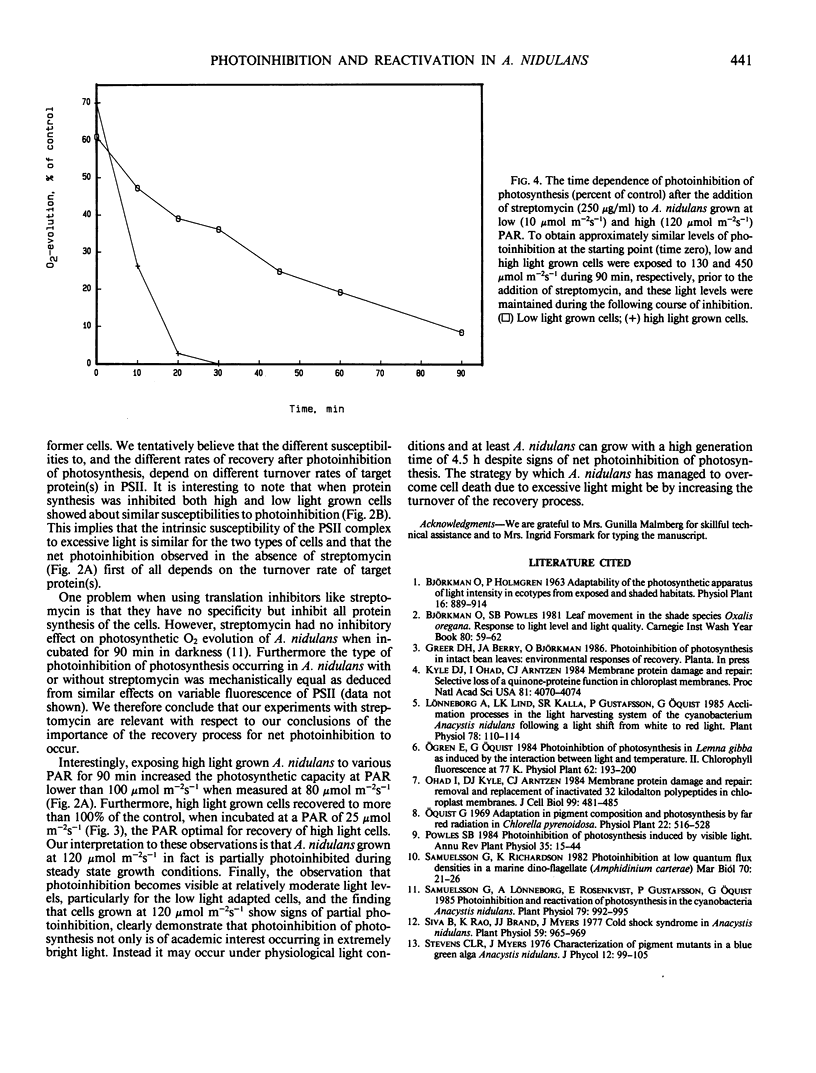Abstract
The susceptibility of photosynthesis to photoinhibition and the rate of its recovery were studied in the cyanobacterium Anacystis nidulans grown at a low (10 micromoles per square meter per second) and a high (120 micromoles per square meter per second) photosynthetically active radiation. The rate of light limited photosynthetic O2 evolution was measured to determine levels of photoinhibition and rates of recovery. Studies of photoinhibition and recovery with and without the translation inhibitor streptomycin demonstrated the importance of a recovery process for the susceptibility of photosynthesis to photoinhibition. We concluded that the approximately 3 times lower susceptibility to photoinhibition of high light than of low light grown cells, significantly depended on high light grown cells having an approximately 3 times higher recovery capacity than low light grown cells. It is suggested that these differences in susceptibility to photoinhibition and recovery depends on high light grown cells having a higher turnover rate of photosystem II protein(s) that is(are) the primary site(s) of photodamage, than have low light grown cells. Furthermore, we demonstrated that photoinhibition of A. nidulans may occur under physiological light conditions without visible harm to the growth of the cell culture. The results give support for the hypotheses that the net photoinhibitory damage of photosystem II results from the balance between the photoinhibitory process and the operation of a recovery process; the capacity of the latter determining significant differences in the susceptibility of photosynthesis to photoinhibition of high and low light grown A. nidulans.
Full text
PDF



Selected References
These references are in PubMed. This may not be the complete list of references from this article.
- Kyle D. J., Ohad I., Arntzen C. J. Membrane protein damage and repair: Selective loss of a quinone-protein function in chloroplast membranes. Proc Natl Acad Sci U S A. 1984 Jul;81(13):4070–4074. doi: 10.1073/pnas.81.13.4070. [DOI] [PMC free article] [PubMed] [Google Scholar]
- Lönneborg A., Lind L. K., Kalla S. R., Gustafsson P., Oquist G. Acclimation Processes in the Light-Harvesting System of the Cyanobacterium Anacystis nidulans following a Light Shift from White to Red Light. Plant Physiol. 1985 May;78(1):110–114. doi: 10.1104/pp.78.1.110. [DOI] [PMC free article] [PubMed] [Google Scholar]
- Ohad I., Kyle D. J., Arntzen C. J. Membrane protein damage and repair: removal and replacement of inactivated 32-kilodalton polypeptides in chloroplast membranes. J Cell Biol. 1984 Aug;99(2):481–485. doi: 10.1083/jcb.99.2.481. [DOI] [PMC free article] [PubMed] [Google Scholar]
- Rao V. S., Brand J. J., Myers J. Cold Shock Syndrome in Anacystis nidulans. Plant Physiol. 1977 May;59(5):965–969. doi: 10.1104/pp.59.5.965. [DOI] [PMC free article] [PubMed] [Google Scholar]
- Samuelsson G., Lönneborg A., Rosenqvist E., Gustafsson P., Oquist G. Photoinhibition and Reactivation of Photosynthesis in the Cyanobacterium Anacystis nidulans. Plant Physiol. 1985 Dec;79(4):992–995. doi: 10.1104/pp.79.4.992. [DOI] [PMC free article] [PubMed] [Google Scholar]


